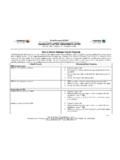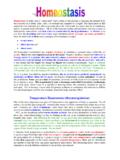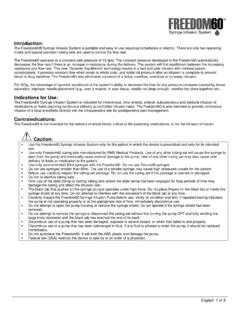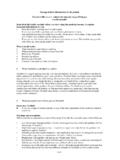Transcription of Cat Feeding Guidelines - The Animal Center
1 Cat Feeding Guidelines Cats are carnivores and were never meant to eat high carbohydrate diets Commercial diets especially dry diets are too high in carbohydrates Cats eating dry food are chronically dehydrated, and do not drink enough water to properly re hydrate themselves Dry diets are not that helpful in preventing dental disease Experts are beginning to warn against Feeding cats dry diets Feeding amounts vary from product to product and cat to cat. If your cat is addicted to dry food or is picky, it is important to make changes carefully don t let your cat stop eating in protest LIST OF BEST DIETS ON LAST PAGE Q.
2 Dry food is best, right? A. Dry pet food is a dehydrated and processed mix of grains, meats, and added vitamins and minerals. Dry foods are typically 30 60% carbohydrate in composition. What isn t well known among cat owners is that a requirement for carbohydrates has never been proven in cats (in contrast to dogs and people). Cats are carnivores, and in the wild eat nothing but meaty little rodents, bugs, birds and lizards. Our domesticated cats, on the other hand, are fed mixtures of meat and grain that produce a balanced diet over the long term.
3 Many believe that those grains, aside from providing artificial balance, may be contributing to problems in the long run. Q. Look, my cat is doing well on dry food. Why should I change? A. Cats descend from desert animals that depended on their food to provide needed water. Their kidneys are adapted to this desert environment to conserve water and concentrate the wastes into the urine. When cats don t get enough water from food or additional water intake, some feel that cats spend much of their lives chronically dehydrated, which is not good for those kidneys or the rest of the body.
4 One common problem that seems to respond to more water in the food is the frustrating FUS, now called FLUTD (lower urinary tract disease) or interstitial cystitis (IC). Most doctors recommend Feeding only canned food to these cats to increase water going into the body and out through the bladder. Could this be a signal that cats don t do well on dry food? Also, many people tend to leave dry food out all the time, leaving their cats to free feed . As convenient as it may be, this is a potentially harmful practice for the cat!
5 Most cats given food all the time eat more than they should, and this practice is behind a growing epidemic of obese cats. And no, it doesn t usually work to give them weight loss food free choice! In addition, free Feeding these high carbohydrate meals has been suggested to contribute to the rising incidence of insulin resistance and diabetes in cats (Rand, 1998). Since this is a chronic, potentially dangerous problem that sometimes requires insulin injections for the rest of the cat s life, this is a major concern.
6 Finally, many people have difficulty medicating their cats, and are forced to mix it in food. It s much easier to mix medicine in canned food than in dry food. Cats who are addicted to dry food and won t eat any canned food (a common problem) are a special challenge to medicate! Q. I was always told to leave food out all the time. Doesn t this decrease urine pH and prevent lower urinary tract disease? A. It is true that eating small meals often lowers urinary pH. And cats are born to hunt constantly, catching little protein meals throughout the day.
7 Remember, though, that dry food is not a meat protein like a lizard or mouse, and since it contains large amounts of carbohydrates (and often less fat) than real prey, we are essentially turning our cats into grazers. Worse, hunting cats are expending mental and physical activity between kills, and must work hard for those meals. The only exercise our dry food grazers are often getting is a jump off the couch! Q. OK, but what about my cat s teeth? Isn t canned food bad for them? A. Scientific evidence does say that cats eating canned food have worse teeth than cats eating dry food; however, if dry food were all that effective, we would not be seeing the large number of dental diets recently introduced to the market.
8 Saying that dry cat food is great at preventing dental disease is like claiming that people could eat pretzels to maintain dental health! Teeth need proper nutrition (good quality diets increase all around health and decrease susceptibility to gum disease), exercise (dental toys or safe meaty bones act like dental floss), and preventive treatment (brushing, where possible). Q. How much should my cat eat? A. Daily calorie needs for a cat vary based on several factors: activity, age, genetics, and health status.
9 Also, all commercial cat foods have different calorie contents. This is even true within the same manufacturer. It is important to find what calorie needs your individual cat has (which may change), and feed each cat individually based on that calculation. The following chart is a guideline and should be adjusted on an individual basis. Cat Healthy Weight (lbs) Active Typical Indoor Cat Weight Loss Obese Prone Weight Gain 5 207 155 103 129 168 8 294 221 147 184 239 10 348 261 174 218 283 12 399 299 200 249 324 15 472 354 236 295 383 *This chart is based on normal weight of cat.
10 (Not actual weight if clinically overweight) Furthermore, every can contains a different calorie density. The following chart gives some common foods and calorie content. Diet Calories / Can ( oz) Calories / Cup (dry) EVO by Natura 200 236 396 Science Diet Adult 163 178 493 9 Lives 147 176 421 Q. Well, maybe so, but I can t get my cat to eat anything new! A. Well, this is a problem. Cats easily become addicted to certain types of foods. Like people who become addicted to cigarettes or drugs, this isn t always good for them.





